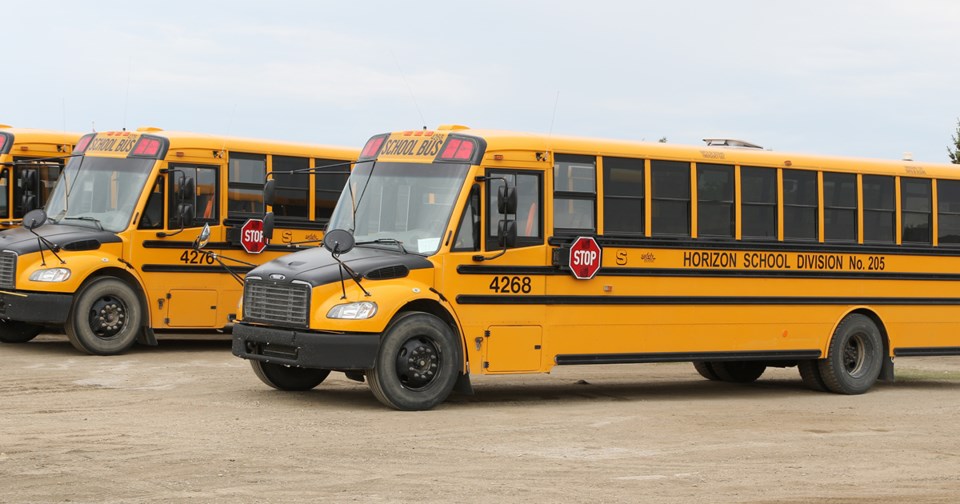EAST CENTRAL — A parliamentary committee is not making a recommendation whether school buses should have seat belts, urging more research on the issue.
“Testimony heard by the [Standing Committee on Transport] was clear that, although seat belts do prevent certain types of injuries, they are neither a panacea, nor the only possible solution, to increasing school bus safety,” said a report on bus safety released June 11. “The committee heard concerns that the installation of seat belts may in fact make school buses less safe.”
The committee started listening to expert testimony about bus safety improvements in April 2019, after the April 6, 2018 Humboldt Broncos bus crash placed the issue at the top of mind of Canadians.
Kevin Garinger, Horizon School Division’s director of education, said he agreed with the committee’s conclusion.
“I think the research that’s going on is necessary,” he said. “I think that the ultimate goal is to make sure that our children are safe at all times and, in particular, on school buses.”
The committee heard testimony that said school buses are among the safest modes of transportation, with children at greater risk of injury as pedestrians around a school bus than as passengers.
School bus seating is currently designed according to a system of compartmentalization, the report said. High padded seat backs are meant to safely absorb the force of impact that may occur during a collision when children slide forward and hit the seat back in front of them.
“Any way we can keep kids in their compartment, either by being belted or with other technologies ... would be the best way to mitigate potential injuries,” Dr. Daniel Rosenfield of the Canadian Pediatric Society told the committee.
The report said while research showed the compartmentalization on most school buses is effective in front-back collisions and at lower speeds, it performs poorly in lateral collisions or rollovers.
Some of the testimonials expressed concern that seat belts could cause more injuries. One concern is that a child may wear a seat belt incorrectly, causing it to not do its job properly.
Another concern, according to Vicky Kyriaco with the Ottawa Student Transportation Authority and Phil Benson with Teamsters Canada, is that there’s more likely to be a situation where students would have to quickly evacuate a school bus than one where children are ejected from the vehicle.
“We anticipate that a busload of 70 children in full winter gear will not be able to undo their seat belts and evacuate a burning bus as quickly as is necessary to avoid smoke inhalation and burns, particularly if the bus is on its side or upside down,” Kyriaco said.
There were also concerns about new demands on bus drivers, who would have to ensure that children wear seat belts properly. Such a requirement could require school divisions to restructure bus routes due to the extra time.
Retrofitting school buses to contain seat belts is only possible on some, due to the extra structural stress they would put on the bus. A retrofit could cost between $8,000 to $20,000, depending on the bus. Bus manufacturers are reluctant to guarantee retrofits, as the long-term impact of such modifications is uncertain.
The parliamentary committee isn’t the only body that’s examining seat belts on school buses. Transport Canada has a task force on school bus safety that’s working with educational authorities, school bus fleet operators, safety groups, industry and academia to study the issue.
Garinger said Horizon would keep the future in mind when it comes to the division’s busing system
“We're in the process of buying another number of buses this year,” he said. “As we go down that path, we want to make sure that there's potential of them having seat belts put in without having to purchase a brand new bus.”



